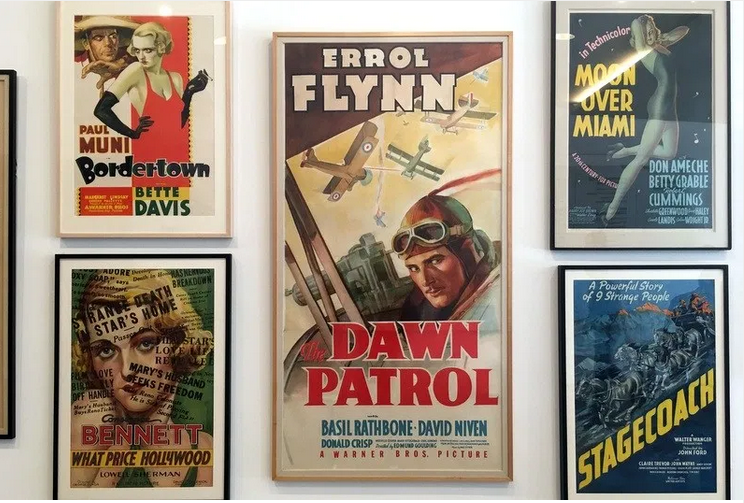The Rise of Artistic Posters: The Evolution of Colour Lithography in the 19th Century
During the late 19th century, the introduction of colour lithography revolutionized the world of poster design, giving rise to a flourishing era of artistic posters. This newfound technique allowed for vibrant and eye-catching designs, capturing the attention of audiences in the 1890s. Often hailed as the “Father of the Poster,” Jules Cheret, a French artist, played a pivotal role in this artistic movement.
The growing significance of advertising during the 1890s provided a fertile ground for the poster movement to thrive. Prominent artists in Paris, including Cheret, Toulouse-Lautrec, Steinlen, Grosset, and Bonnard, emerged as key figures in creating captivating posters. These posters spanned various themes such as theatre, cycles, cigarettes, and beverages.
Today, French posters from this period have become highly sought after by collectors. Depending on the artist and the quality of the graphics, prices can range from around £200 to several thousand pounds. The unique combination of artistic expression and advertising allure makes these posters valuable pieces of art history, showcasing the ingenuity and creativity of the era.
Exploring the World of Collectible Posters: A Guide to What to Collect
When it comes to collecting posters, the possibilities are vast, offering a wide range of subjects and styles to suit individual preferences, interests, and budgets. The beauty of poster collecting lies in its affordability, as one doesn’t necessarily need to invest a large sum of money to assemble an intriguing collection.
Personal Taste and Interest: What to Consider
What people choose to collect ultimately depends on their personal taste and interests. Posters cover a diverse array of themes, including art, travel, movies, sports, music, advertising, and more. Some collectors may have a particular affinity for vintage movie posters, while others may be drawn to striking art deco designs or nostalgic travel advertisements. Exploring different genres and subjects can help collectors discover what resonates with them.
Budget-Friendly Options
One of the advantages of poster collecting is that there are affordable options available. While certain highly sought-after designs can command prices exceeding £5000, there are many worthwhile examples that can be obtained for around the £1000 mark or even less in some cases. This accessibility allows collectors to start building their collections without breaking the bank.
Finding Hidden Gems
Part of the joy of poster collecting is the thrill of uncovering hidden gems. Garage sales, flea markets, antique shops, and online platforms can be treasure troves for finding unique and lesser-known posters. Sometimes, rare and valuable posters can be discovered at affordable prices in unexpected places.
Research and Expertise
As with any form of collecting, it is important to do some research and familiarize oneself with the market. Understanding the value, condition, and authenticity of posters can be aided by consulting reputable dealers, attending poster fairs, or joining collector communities where knowledge and expertise are shared.
Building an Interesting
Collection Building a collection is an ongoing journey. Collectors can choose to focus on a specific theme, artist, era, or style, or they can opt for a diverse collection that reflects their eclectic tastes. The key is to curate a collection that brings joy and captures the essence of one’s interests and aesthetics.
In conclusion, the world of poster collecting offers a multitude of options for enthusiasts. With a blend of personal taste, interest, and budget considerations, collectors can embark on a fulfilling journey of assembling an intriguing and affordable collection of posters.
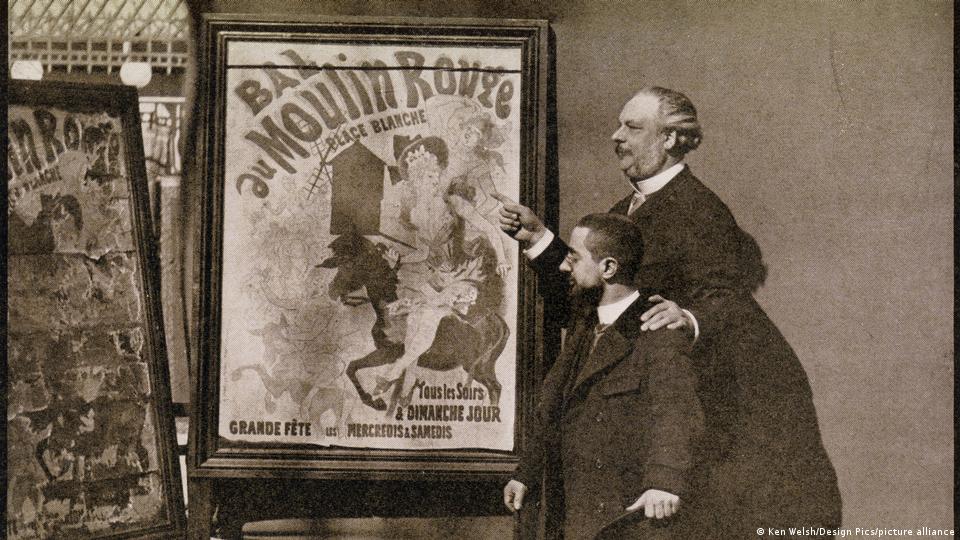
The Evolution of Posters in England: A Glimpse into Artistic Pioneers
In England, the development of the poster was spearheaded by talented artists such as Dudley Hardy and John Hassall. Their contributions played a significant role in shaping the artistic landscape of poster design during the late 19th and early 20th centuries.
John Hassall’s Impact
One notable creation by John Hassall is the iconic “Skegness Is So Bracing” poster, featuring cheerful fishermen, which gained immense popularity in 1908. This poster has become an enduring symbol of British seaside resorts and remains a beloved image to this day. Collectors often seek out vintage travel posters from this era, and examples in good condition are quite rare. These sought-after travel posters, published prior to 1914, typically range in price from £500 to £4000, depending on the subject and the artist.
The Allure of Theatre Posters
While travel posters from that period may command higher prices, theatre posters from the same era offer a remarkable value proposition for collectors. Theatre posters, showcasing captivating imagery and promoting theatrical productions, can be found at relatively affordable prices, starting around £100. These posters not only provide a glimpse into the theatrical culture of the time but also serve as historical artifacts capturing the essence of the performances and the artistic styles of the era.
The Rarity and Value
It is worth noting that vintage posters, regardless of the genre, are often cherished by collectors due to their rarity and historical significance. As time passes, finding well-preserved examples becomes increasingly challenging, contributing to their value and desirability among enthusiasts. The scarcity of travel posters and their enduring appeal make them highly sought-after, while the affordability and accessibility of theatre posters make them an excellent entry point for aspiring collectors.
Appreciating Artistic Legacy
The work of Dudley Hardy and John Hassall, along with other British poster artists of their time, left an indelible mark on the art world. Their creations captured the spirit of their era, conveying messages, promoting products, and shaping the visual landscape of England. Owning a piece of this artistic legacy through collecting these posters allows enthusiasts to appreciate the artistry and historical context that each poster represents.
In conclusion, the contributions of artists like Dudley Hardy and John Hassall were instrumental in the development and popularity of posters in England. Collecting vintage posters from this period allows enthusiasts to delve into the rich artistic heritage and acquire captivating pieces that evoke the spirit of a bygone era. Whether one’s interest lies in travel posters or theatre posters, there is a wide range of options available to suit different tastes and budgets in the fascinating world of English poster collecting.
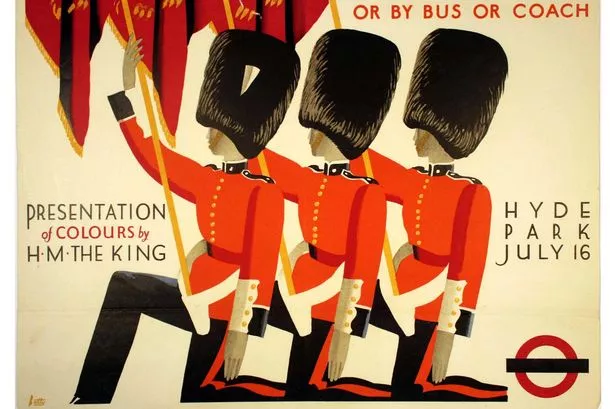
The London Underground: A Hub of Artistic Poster Design
In the early 20th century, the London Underground underwent a remarkable transformation of its publicity operations, thanks to the visionary efforts of Frank Pick. Joining the London Underground in 1906, Pick revolutionized its approach to advertising and enlisted the talents of esteemed modern poster artists to create captivating visual campaigns. One of his notable discoveries was the American artist E. McKnight Kauffer, whose artistic contributions played a significant role in shaping the London Underground’s visual identity.
A Diverse Array of Artists
Under Pick’s leadership, a diverse roster of talented artists was employed, each bringing their unique artistic styles and perspectives to the posters. Some of the notable artists who collaborated with the London Underground include Fred Taylor, Frank Brangwyn, Laura Knight, Gregory Brown, F. C. Herrick, E. A. Cox, and later, renowned names such as Tom Eckersley, John Farleigh, Graham Sutherland, Edward Bawden, Abram Games, and Hans Unger. This impressive lineup of artists infused their creativity into the posters, capturing various aspects of London life and its surrounding areas.
A Wide Range of Subjects
The subjects depicted in the London Underground posters were diverse and showcased the many attractions and destinations served by the Underground and General Omnibus Co. The posters highlighted London’s renowned museums and galleries, the beauty of its parks and gardens, and the allure of the countryside in the Home Counties. From vibrant cityscapes to serene landscapes, the posters aimed to entice passengers to explore and experience the rich cultural offerings of the region.
Affordable Collectibles
Collecting London Underground posters offers a delightful opportunity to own a piece of the city’s artistic heritage. Prices for these vintage posters typically start around £200, making them accessible to a wide range of enthusiasts. However, sought-after designs and rare editions can command prices in the thousands, reflecting their desirability and historical significance.
Consider the Panel
Posters For collectors with limited space, the London Underground’s smaller format “Panel” posters provide an excellent alternative. These compact yet captivating designs offer a glimpse into the artistic mastery of the era while offering a more manageable size for display.
Preserving a Legacy of Art and Design
The posters produced during Frank Pick’s era at the London Underground are not just remarkable works of art but also serve as important artifacts documenting the cultural and visual history of the city. Owning these posters allows collectors to appreciate the artistic talent and ingenuity of the artists while preserving a tangible piece of London’s heritage.
In conclusion, the London Underground’s association with prominent artists and its commitment to innovative poster design transformed it into a hub of artistic expression. The range of subjects depicted in the posters reflects the rich tapestry of London life and the surrounding areas. Whether you are a seasoned collector or a newcomer to the world of poster collecting, London Underground posters offer an alluring blend of art, history, and affordable collectibles that will enhance any collection.
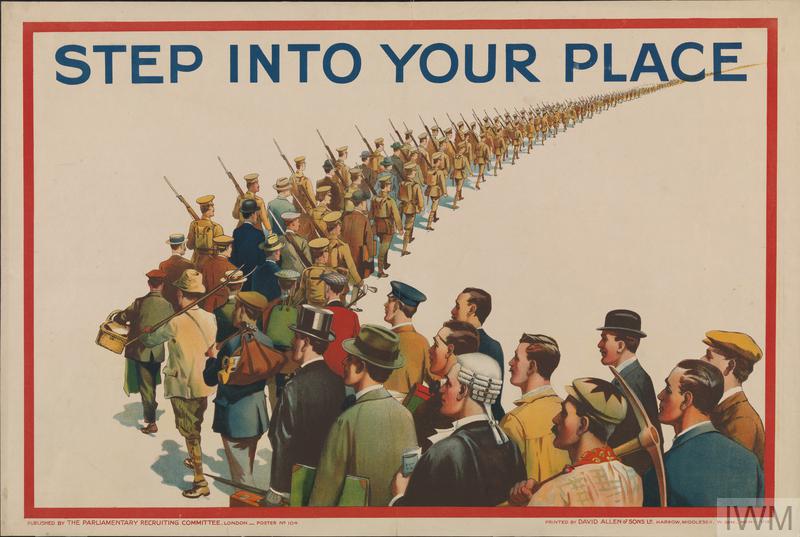
The Impact of Posters during the Great War
During the Great War, posters played a significant role in shaping public opinion and mobilizing support for the war effort. Before conscription was introduced in 1916, the Parliamentary Recruiting Committee issued a wide range of posters, each with the purpose of inspiring patriotism and encouraging men to enlist. These early posters consisted primarily of letterpress designs, featuring powerful slogans such as “Why Aren’t You in Khaki?”, “Rally Round the Flag,” and “A Call to Arms.”
As the war progressed, pictorial posters emerged, leveraging visual imagery to evoke a sense of national pride and duty. These posters depicted various scenes related to recruitment, such as recruiting sergeants, iconic figures like John Bull, buglers sounding the call to action, and troops marching off to war. The National War Savings Committee also produced a significant number of posters, with notable contributions from artists like Bert Thomas and Frank Brangwyn. Their designs aimed to raise funds for initiatives providing comfort to the troops, assistance for the wounded, and support for war hospitals, ambulances, and canteens.
Posters also played a crucial role in appealing to women’s participation in the war effort. They called upon women to contribute by making munitions or joining organizations like the Women’s Army Auxiliary Corps (WAAC), Women’s Royal Naval Service (Wrens), or Women’s Land Service Corps. These recruitment posters targeted women, highlighting their crucial role in supporting the war.
The pricing of Great War posters can vary depending on their rarity and significance. Letterpress posters from this era can typically be found starting at around £100. Pictorial examples, which are more abundant, are generally priced in the range of £150 to £200. However, iconic and sought-after designs such as “Daddy, what did you do in the Great War?” by Saville Lumley, E.V. Kealy’s “Women of Britain Say Go,” and Lucy Kemp-Welch’s “Forward” can command higher prices, ranging from £400 to £1500.
Collecting Great War posters not only allows individuals to own a piece of history but also provides insight into the powerful propaganda and messaging employed during a time of immense conflict. These posters serve as tangible reminders of the collective effort and sacrifice made during the war.
In conclusion, the posters of the Great War played a crucial role in rallying support, inspiring patriotism, and mobilizing various segments of society to contribute to the war effort. They stand as powerful reminders of a pivotal moment in history, capturing the spirit and emotions of the time. Collecting these posters offers a unique opportunity to engage with the past and preserve the legacy of those who lived through the Great War.
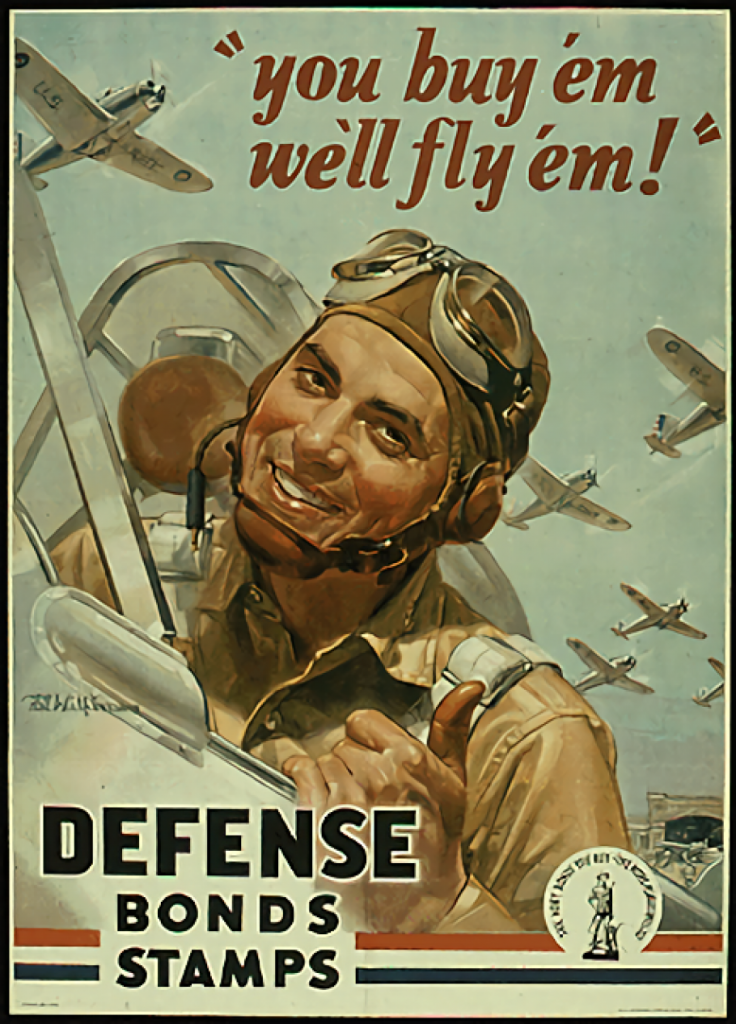
The Power of Propaganda: World War II Posters
The propaganda posters created during World War II, as well as those associated with the Spanish Civil War, have experienced a surge in popularity in recent years. These captivating artworks cover a wide range of subjects related to the war effort on the home front. They convey important messages about various aspects of wartime life, including the evacuation of children, air raid precautions, public health, salvage and recycling, fuel conservation, the “Dig for Victory” campaign promoting home gardening, Civil Defence, and the production of munitions, tanks, guns, ships, and aircraft.
These posters also highlight the heroic actions of the Allied forces, showcasing them in action and rallying support for their cause. The “Back Them Up” series and the iconic Fougasse “Careless Talk” campaign are just a couple of examples that gained widespread recognition. Additionally, the technically brilliant designs of Abram Games, a renowned British poster artist, contributed to the visual impact of wartime propaganda.
The availability and pricing of World War II posters can vary depending on factors such as rarity and desirability. Many posters from this period can be obtained for prices ranging from £100 to £300, offering collectors an opportunity to own a piece of history at an affordable price. However, certain posters, such as Abram Games’s ATS poster, which earned the nickname “Blonde Bombshell,” have attained legendary status and can command higher prices. It is not uncommon to see this rare piece sell for over £3000.
Collecting World War II propaganda posters allows individuals to delve into the visual propaganda strategies employed during a significant global conflict. These posters serve as historical artifacts, capturing the spirit of the time and providing insights into the efforts made to mobilize and unite communities. They also offer a glimpse into the artistic and graphic design trends of the era.
In conclusion, World War II propaganda posters are highly sought after for their historical significance and visual appeal. They provide a tangible connection to the wartime experience and offer a unique perspective on the social, cultural, and political climate of the time. Whether it’s the evocative imagery, powerful slogans, or the artistic talent behind them, these posters continue to captivate collectors and enthusiasts alike.
The Allure of Railway Posters
Railway posters, particularly those published by the “Big Four” railway companies – Great Western Railway, Southern Railway, London Midland Scottish, and London North & Eastern – between 1923 and 1939, as well as those produced by British Railways after the war, have established themselves as a flourishing market with remarkable growth in prices over the past decade.
These posters showcased the various towns and cities served by the railway companies, featuring a wide range of subjects to entice potential travelers. From serene beach scenes and picturesque seaside resorts to captivating golf courses, architectural marvels of towns and cities, majestic abbeys and cathedrals, famous landmarks, historical motifs, special train services, bustling industrial scenes, vibrant ports, harbours and ships, and areas of outstanding natural beauty, these posters painted a vivid picture of the destinations awaiting exploration. Some posters even featured continental resorts and cities, expanding the possibilities for travel.
Among the most sought-after designs are those featuring locomotives, dining cars, sun-soaked bathers, golfers in action, and posters displaying the distinctive Art Deco style that defined the era. The majority of posters were published in two standard sizes: double royal (102cm x 64cm) and quad royal (102cm x 128cm). Prices for these collectibles vary depending on factors such as the subject, design, and artist involved. For an attractive design, one can expect to pay £300 and upwards, while prices in the range of £2000 to £5000 are not uncommon for the most coveted pieces. An exceptional example is the iconic “Night Scotsman” poster illustrated by Alexander Alexeieff and published by the London and North Eastern Railway (LNER) in 1931, which recently fetched an impressive £34,000 at auction.
The LNER, under the visionary leadership of advertising manager William Teasdale, played a pivotal role in advancing poster design by engaging some of the finest artists of the time. Teasdale believed in captivating people’s imaginations and fueling their desire to travel, discover the charm of northern ports, and explore the breathtaking beaches served by the company. The LNER employed five renowned poster designers, collectively known as “The Big Five”: Tom Purvis, Frank Newbould, Austin Cooper, Frank H. Mason, and Fred Taylor. Other notable artists who made significant contributions to railway poster art include Septimus E. Scott, R. Higgins, E. McKnight Kauffer, Kenneth D. Shoesmith, Chas Pears, H.G. Gawthorn, Norman Wilkinson, and Fortunino Matania. In the post-war period, artists such as Abram Games, Leonard Squirrell, Jack Merriott, Terence Cuneo, and Claude Buckle gained recognition for their exceptional work and have since become highly sought-after by collectors.
Collecting railway posters allows enthusiasts to immerse themselves in the golden age of travel and experience the nostalgic allure of bygone eras. These captivating artworks not only provide glimpses into the picturesque destinations of the past but also showcase the remarkable artistic talent and advertising strategies employed by the railway companies. Whether it’s the evocative imagery, historical significance, or the skillful craftsmanship, railway posters continue to captivate collectors, serving as windows to an era when the world was just waiting to be explored.
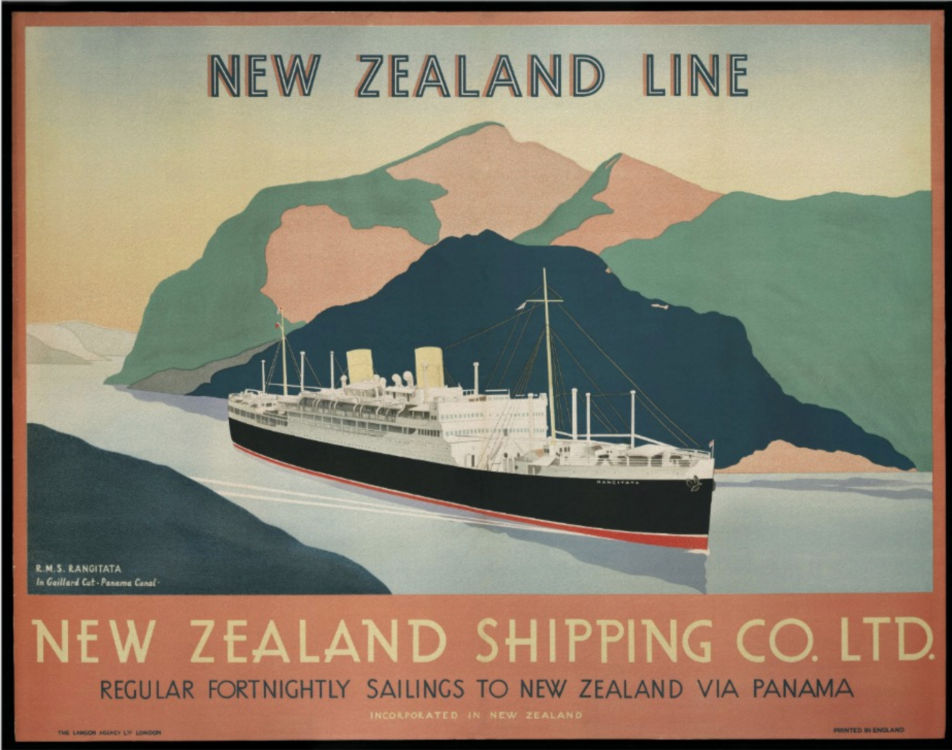
The Allure of Collectible Shipping Posters
Collecting shipping posters has become a popular pursuit among collectors, offering a fascinating glimpse into the world of maritime travel. Whether they portray majestic Cunard Liners elegantly crossing the Atlantic or ships from renowned companies like Union Castle, Blue Star, Orient Line, P & O, or Royal Mail Line sailing various routes, these posters hold a strong appeal for enthusiasts.
One of the key factors that make shipping posters highly sought after is their captivating graphic design. Artists such as Frank H. Mason, Norman Wilkinson, Walter Thomas, Montague B. Black, Odin Rosenvinge, and Chas Pears have created stunning and visually striking artworks that capture the grandeur and allure of seafaring. These posters, featuring magnificent ships against dramatic backdrops, evoke a sense of adventure and the excitement of embarking on a voyage. Prices for these remarkable pieces start around £300-£400, reflecting their collectible value, and can reach thousands of pounds for the rarest and most coveted designs.
Each shipping poster tells its own story, depicting a specific era in maritime history and reflecting the unique characteristics of the shipping company it represents. From the elegant luxury liners of Cunard to the exotic routes served by Orient Line, these posters not only showcase the vessels themselves but also encapsulate the spirit of exploration and the romance of travel by sea. They are a testament to the golden age of ocean liners when transatlantic voyages were the epitome of luxury and adventure.
Collecting shipping posters allows enthusiasts to appreciate the artistry and craftsmanship that went into their creation. These artworks serve as reminders of a bygone era when sea travel was the primary means of crossing vast distances, and each voyage held a sense of anticipation and discovery. They also provide valuable insights into the history of shipping companies and the significant role they played in connecting people and cultures around the world.
Whether one is captivated by the sleek lines of an ocean liner, the nostalgia of a historic shipping route, or the artistic talent displayed in these posters, collecting shipping memorabilia offers a unique way to explore the rich heritage of maritime travel. Each poster is a tangible piece of history, preserving the legacy of iconic shipping companies and celebrating the beauty of the ships that once graced the world’s oceans.
The Unique World of Shell-Mex & BP Posters
Shell-Mex & BP, a prominent company in the oil and gas industry, took a distinctive approach to displaying their advertising posters. They utilized their fleet of lorries by equipping them with display boards to showcase posters measuring 76cm x 102cm. These posters, affixed to the lorries, became known as “lorry bills.” Between 1920 and 1939, a total of 545 designs were published, making for a remarkable collection.
One notable series produced by Shell-Mex & BP is the “Visit Britain’s Landmarks” series, which featured the slogan “Everywhere You Go You Can Be Sure Of Shell.” These posters highlighted iconic British landmarks and were created by renowned artists. Examples from this series include “Rye Marshes and Kimmeridge Folly” by Paul Nash, “The Great Globe Swanage” by Graham Sutherland, “Faringdon Folly” by Lord Berners, “Swaledale Yorkshire” by Barnet Freedman, and many more. The average prices for these posters range from around £400 to £600, although certain designs by specific artists can command higher prices.
Another series of Shell-Mex & BP posters, known as “These People Use Shell,” showcased various professions and hobbies. The series included captivating designs such as “Journalists” by Hans Schleger (pseudonym Zero), “Footballers” by Paul Nash, “Theatregoers” by John Armstrong, “Actors” by E. McKnight Kauffer, “Racing Motorists” by Richard Guyatt, and “Airmen” by Andrew Johnson. Most of these posters fall within the price range of £800 to £1500, reflecting their collectible value and the artistic talent behind them.
It is worth noting that the Shell-Mex & BP posters were not printed in large quantities like their railway counterparts. As a result, they are considered scarce and rarely appear in auctions, making them highly sought after by collectors. However, the smaller posters commissioned by Shell in the 1950s, primarily for distribution in schools, are more common and accessible to collectors.
Shell-Mex & BP had the privilege of working with some of the finest designers and artists of the time, resulting in a remarkable collection of posters. While some of these artworks are already highly valued, there are also underrated gems that could prove to be excellent investment opportunities for those who appreciate their unique appeal. The Shell-Mex & BP posters capture a specific era and showcase the artistic talent and advertising innovation of the company, making them a valuable addition to any collection.
The Impact of the Empire Marketing Board Posters
During the years 1926 to 1933, the Empire Marketing Board (EMB) embarked on a significant poster campaign aimed at promoting the goods of the British Empire. With the backing of state funds, the EMB commissioned approximately 800 unique designs, seeking out the talents of some of the most distinguished designers of the period. The posters produced during this campaign exhibit a high level of quality and an impressive range of artistic styles, making them valuable pieces to preserve and collect.
The majority of EMB posters were printed in either the double crown size (76cm x 51cm), which are more commonly found, or the larger quad crown and single sheet sizes, which are relatively rare. It is worth noting that the larger-sized posters have not survived in great numbers. However, many of the smaller posters were distributed to schools for educational purposes, which may explain why they are more abundant in collections today.
The EMB posters encompassed a wide range of subjects, showcasing various regions and industries within the British Empire. Notable examples include Charles Pears’ depictions of Gibralta, Bombay, Malta, and Aden, Clive Gardiner’s artworks on motor manufacturing and making electrical machinery, E. A. Cox’s portrayal of sugar growing in Mauritius, Gerald Spencer Pryse’s illustrations of gathering cocoa pods, sorting manganese ore, and tea picking in Ceylon, Frank Newbould’s representation of dairying in Australia, E. McKnight Kauffer’s vibrant depiction of banana palms, Fred Taylor’s artworks featuring empire builders and the Empire Shop, and Adrian Allinson’s portrayal of East African transport in both old and new styles.
Prices for EMB posters can vary, ranging from around £300 to £3000, depending on factors such as rarity, condition, and desirability among collectors. These posters not only hold historical significance but also offer a glimpse into the artistic and promotional endeavors of the British Empire during that period.
The Empire Marketing Board posters serve as a reminder of the ambitious efforts to promote imperial products and trade during the early 20th century. Their artistic appeal, combined with their historical and cultural value, make them highly sought after by collectors and enthusiasts alike.

The Joy of Early Airline Posters
Early airline posters from the 1920s and 1930s are highly sought after by collectors due to their scarcity. These posters, showcasing the emerging world of aviation and air travel, are considered some of the most challenging to find among travel posters.
Imperial Airways, known for their iconic Empire Flying Boats, produced posters during this era that are particularly sought after. Examples of these posters, in good condition, can command prices in the high hundreds. The combination of the historical significance of Imperial Airways and the captivating imagery depicting their flying boats makes these posters highly desirable among collectors.
Posters from other airlines, such as BOAC (British Overseas Airways Corporation) and BEA (British European Airways), dating from the 1940s and 1950s, are more readily available in the market. Artists like Frank Wooton, Lee-Elliott, Abram Games, and various unknown designers contributed to the creation of these posters. Prices for these later airline posters are generally in the range of £300 to £500, making them relatively more affordable for collectors. Additionally, posters from the 1960s can often be found for under £300.
These airline posters not only capture the spirit of early aviation but also provide a glimpse into the evolving world of air travel. They serve as a visual reminder of the excitement and glamour associated with flying during that era. Collecting these posters allows enthusiasts to appreciate the historical significance, artistic styles, and advertising strategies employed by airlines in promoting their services.
Whether it’s the rarity of early airline posters or the affordability of mid-century designs, these pieces of aviation art continue to captivate collectors, aviation enthusiasts, and those with a passion for vintage travel memorabilia.
National Savings Posters: Celebrating the British Countryside
National Savings Posters, first published in 1916, offer a charming glimpse into the idyllic countryside of Britain. These posters, produced between the wars and after 1945, were created to promote the idea of saving and investing in the nation’s future. They often feature picturesque landscapes, rural scenes, and themes of patriotism and community.
Compared to railway posters from the same period, National Savings Posters tend to be more affordable for collectors. Prices for these posters typically start around £40 to £60, making them accessible for enthusiasts with various budgets. While some of the best examples may reach prices of around £300, the majority of these posters can be acquired for under that amount.
The appeal of National Savings Posters lies not only in their affordability but also in their nostalgic and timeless depiction of the British countryside. They capture a sense of tranquility, patriotism, and the importance of saving for the greater good. Collecting these posters allows individuals to connect with a bygone era and appreciate the artistic representation of rural landscapes.
Post Office or GPO Posters: Showcasing Postal Services
The Post Office, also known as the GPO (General Post Office), issued a series of mainly small-format posters that showcased different aspects of their services. These posters aimed to inform and educate the public about the various postal offerings and encourage engagement with postal activities.
Artists such as E. McKnight Kauffer, H. S. Williamson, Eric Fraser, and John Armstrong were commissioned to create these posters. Their designs ranged from highlighting the efficiency of postal deliveries to promoting services like telegrams and telephone communications. The artwork often combined striking visuals with informative text.
Prices for many Post Office or GPO posters are generally under £200, reflecting their smaller size and the broader availability of these pieces. However, posters featuring the work of renowned artists may command prices around £300 to £400. Collecting these posters provides a glimpse into the history of postal services and the creative approaches taken to promote them.
Overall, National Savings Posters and Post Office or GPO Posters offer unique collecting opportunities for enthusiasts interested in exploring different aspects of British culture, patriotism, and everyday services.
Hints & Tips for Collecting and Preserving Posters
- Framing and Display: When displaying your posters, it’s best to have them framed under ultraviolet (UV) glass or perspex. UV glass helps protect the posters from fading and damage caused by direct sunlight exposure. Avoid hanging posters in direct sunlight to preserve their colors and prevent deterioration.
- Rotation with Standard Size Frames: If you have limited space or a collection of posters of the same size, consider getting standard size frames made. This allows for easy access and rotation of your posters, giving you the flexibility to change the display periodically and enjoy different pieces from your collection.
- Proper Storage: Posters not currently on display should be stored in folders made of acid-free paper. Acid-free paper helps prevent yellowing and degradation of the posters over time. It’s important to keep the posters in a cool, dry environment to minimize the risk of moisture damage.
- Linen Backing: If you have posters with folds, tears, or other damage, it is recommended to have them professionally linen backed. Linen backing involves mounting the poster onto a linen support, which not only helps repair existing damage but also provides added protection, ease of handling, and long-term preservation.
- Careful Handling: When handling your posters, make sure to use clean hands or wear gloves to avoid transferring oils or dirt onto the delicate surfaces. Be gentle while unrolling or handling folded posters to prevent further damage.
- Documentation and Cataloging: Keep a record of your collection by documenting details such as the artist, title, year, and any relevant historical information. This helps maintain the provenance and value of your posters and allows for easy reference and cataloging.
- Seek Professional Advice: If you’re new to collecting or have valuable posters that require restoration or appraisal, it’s advisable to consult professionals in the field. They can provide expert guidance on preservation techniques, restoration services, and the current market value of your posters.
By following these hints and tips, you can ensure the longevity and preservation of your poster collection, allowing you to enjoy and share them for years to come.
Collecting Posters FAQ
- What are some popular types of posters that collectors often look for?
- Movie posters, vintage travel posters, concert posters, and art prints are among the popular types of posters that collectors often seek.
- How do you determine the value of a poster?
- Factors such as rarity, condition, age, artist/designer, subject matter, and demand within the market influence the value of a poster. Historical significance and cultural relevance can also play a role.
- What are some key factors to consider when buying a collectible poster?
- Important factors to consider include the authenticity, condition, provenance, and overall appeal of the poster. Additionally, understanding the market and current pricing trends can help ensure a sound investment.
- Are there specific artists or designers whose posters are highly sought after?
- Yes, certain artists and designers have gained significant recognition and their posters are highly sought after by collectors. Examples include Alphonse Mucha, Jules Chéret, Toulouse-Lautrec, and Saul Bass, among others.
- What are some common challenges or pitfalls to watch out for when collecting posters?
- Some challenges include the risk of purchasing counterfeit or reproduction posters, assessing the condition accurately, and avoiding overpaying for a poster based on subjective appeal rather than its true value.
- How can someone authenticate the authenticity of a vintage poster?
- Authenticating a vintage poster involves conducting thorough research, examining key details such as printing techniques, paper quality, and markings/signatures, consulting with experts or reputable dealers, and comparing the poster to reliable reference materials.
- Are there any specific preservation techniques or best practices for maintaining the condition of posters?
- Proper preservation techniques include framing posters with acid-free materials, using UV-protective glass or acrylic to minimize light damage, and storing posters in a cool, dry environment. Handling posters with clean hands and avoiding direct contact can also help prevent damage.
- Where can collectors find reliable sources to purchase posters?
- Reliable sources for purchasing posters include reputable auction houses, specialized poster dealers, online marketplaces with trusted sellers, and dedicated poster exhibitions or conventions.
- What are some lesser-known or underrated poster designs or categories that collectors should explore?
- Posters promoting social causes, political movements, lesser-known films or events, regional advertising, and niche artistic styles are often overlooked and can offer unique and interesting additions to a collector’s repertoire.
- Are there any notable stories or anecdotes related to rare or valuable posters that you can share?
- There are countless stories of rare or valuable posters being discovered in unlikely places such as attics, flea markets, or garage sales, with unsuspecting owners finding treasures worth significant sums. These stories emphasize the thrill of poster collecting and the potential for unexpected finds.

